About UMB History, highlights, administration, news, fast facts
- Accountability and Compliance
- Administration and Finance
- Center for Information Technology Services
- Communications and Public Affairs
- Community Engagement
- Equity, Diversity, and Inclusion
- External Relations
- Government Affairs
- Philanthropy
- Office of the President
- Office of the Provost
- Research and Development
- University Counsel
- Office of the President
- Administrative Officers
- Deans
- Boards of Visitors
- Faculty Senate
- Staff Senate
- University Counsel



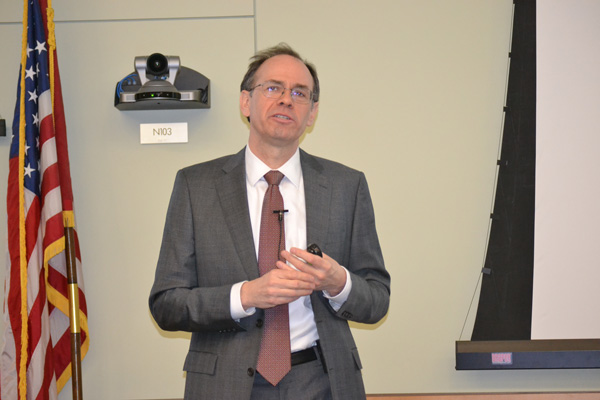 Allow me to provide a couple examples of the impact we are having. Some 3 million to 5 million people a year get cholera. Over 100,000 people are still dying of cholera. That incidence is increasing unfortunately. It’s very prone to very severe epidemics. When there was the earthquake in Haiti, you had a big ballooning of cholera there. Right now there’s no vaccine in the U.S. and the other vaccines that exist in the world take two doses. If you think back to Haiti, our University was great and responded. We had a bunch of people from Shock Trauma who went down there. They were unprotected from cholera. So in the U.S., we think of first responders, military troops, also travelers. We have a bunch of people from this University going to areas around the world that are prone to cholera.
Allow me to provide a couple examples of the impact we are having. Some 3 million to 5 million people a year get cholera. Over 100,000 people are still dying of cholera. That incidence is increasing unfortunately. It’s very prone to very severe epidemics. When there was the earthquake in Haiti, you had a big ballooning of cholera there. Right now there’s no vaccine in the U.S. and the other vaccines that exist in the world take two doses. If you think back to Haiti, our University was great and responded. We had a bunch of people from Shock Trauma who went down there. They were unprotected from cholera. So in the U.S., we think of first responders, military troops, also travelers. We have a bunch of people from this University going to areas around the world that are prone to cholera. 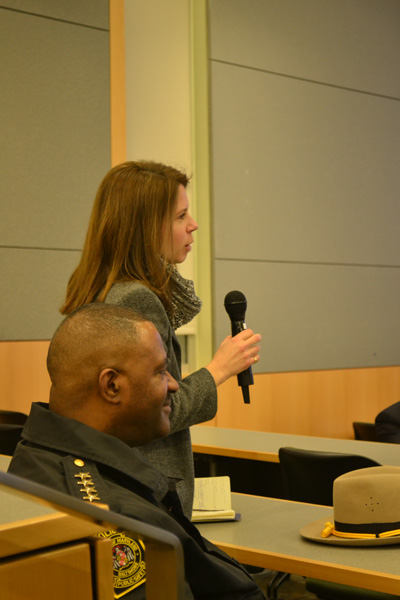 Q: Before I came to the School of Nursing last semester I was involved with a startup in Annapolis. We had a medical device. We were funded to about $3.5 million so the Harpoon Medical example with Dr. Gammie caught my eye. I’m curious to know, where will the next $100 million come from to make Harpoon successful? I’m new to the UM Ventures idea and also do you ever take outside inventions in-house and bring them to the next level?
Q: Before I came to the School of Nursing last semester I was involved with a startup in Annapolis. We had a medical device. We were funded to about $3.5 million so the Harpoon Medical example with Dr. Gammie caught my eye. I’m curious to know, where will the next $100 million come from to make Harpoon successful? I’m new to the UM Ventures idea and also do you ever take outside inventions in-house and bring them to the next level? 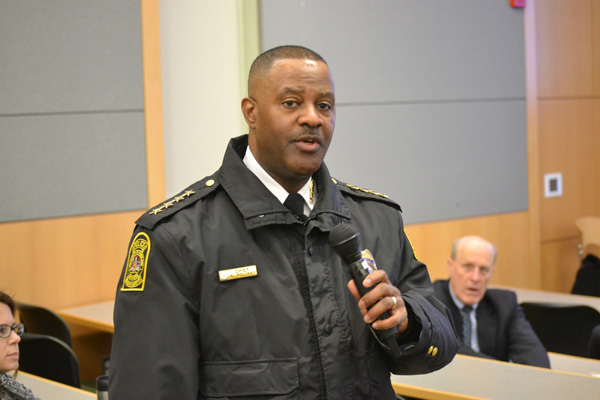 Police chief Antonio Williams: Actually, we do have good news because all of us certainly had some serious safety concerns about last year. As you know, we put some things in place to try to mitigate those incidents and certainly help everyone feel safer. I thank you all because we’ve gotten a lot of excellent feedback about the services that we’ve been providing. Last year at this time, we already had four robberies. This year we had one. We will strive to keep that up.
Police chief Antonio Williams: Actually, we do have good news because all of us certainly had some serious safety concerns about last year. As you know, we put some things in place to try to mitigate those incidents and certainly help everyone feel safer. I thank you all because we’ve gotten a lot of excellent feedback about the services that we’ve been providing. Last year at this time, we already had four robberies. This year we had one. We will strive to keep that up. 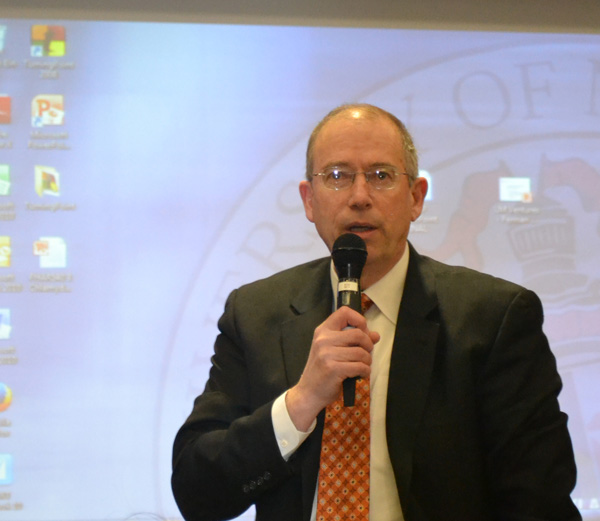 Q: I thought a lot more hands would have gone up by now. I’ll go ahead and break the ice. First of all, the University needs to be commended for trying to deal with the first set of state cuts, by dealing with the hiring freeze and the deferred maintenance. That’s very honorable. Some of those cuts still found their way to our departments. I’m wondering if you wouldn’t mind commenting on the governor’s proposed claw-back of the COLA?
Q: I thought a lot more hands would have gone up by now. I’ll go ahead and break the ice. First of all, the University needs to be commended for trying to deal with the first set of state cuts, by dealing with the hiring freeze and the deferred maintenance. That’s very honorable. Some of those cuts still found their way to our departments. I’m wondering if you wouldn’t mind commenting on the governor’s proposed claw-back of the COLA? 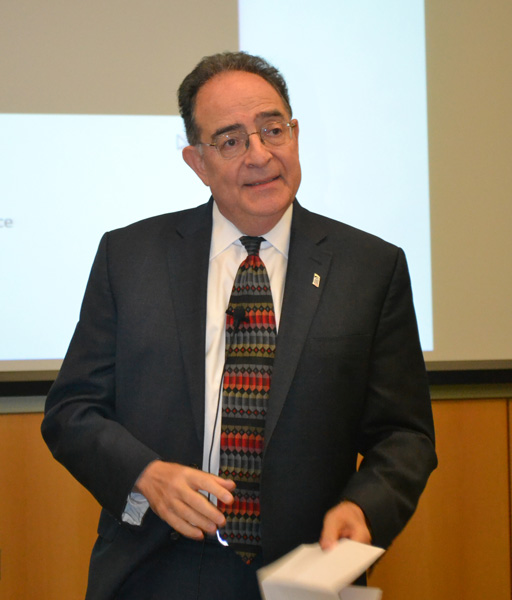 Dr. Perman: What we are doing at this point is planning. In my State of the University speech last April I announced an intent to form a group led by Pete Gilbert, our chief operating officer, to try to take out over the ensuing several years $20 million in expenses. That group has been working diligently, talking as a team of leaders to their folks in each area. So, I would rather not have been challenged by a $6.9 million cut to this campus for this year. We won’t know for sure until we know what’s going to happen with the COLA, but we’re estimating an additional $3.5 million cut for this University as of July 1. We’re working as a team to decide where we can take out expense. We will get through whatever is ahead of us.
Dr. Perman: What we are doing at this point is planning. In my State of the University speech last April I announced an intent to form a group led by Pete Gilbert, our chief operating officer, to try to take out over the ensuing several years $20 million in expenses. That group has been working diligently, talking as a team of leaders to their folks in each area. So, I would rather not have been challenged by a $6.9 million cut to this campus for this year. We won’t know for sure until we know what’s going to happen with the COLA, but we’re estimating an additional $3.5 million cut for this University as of July 1. We’re working as a team to decide where we can take out expense. We will get through whatever is ahead of us.